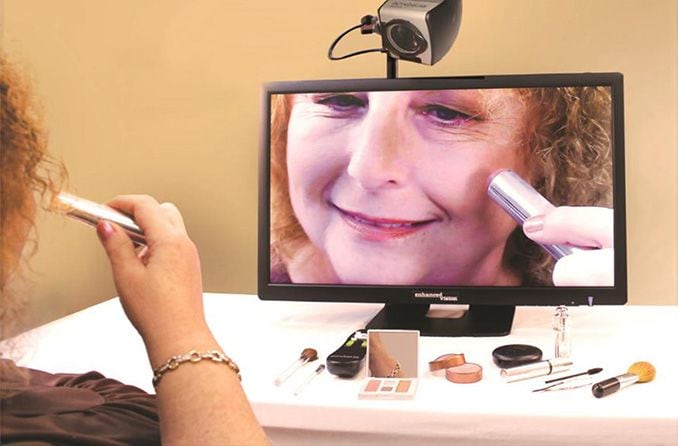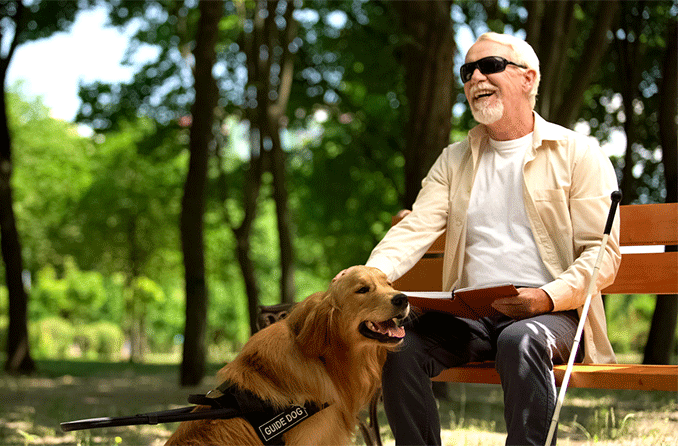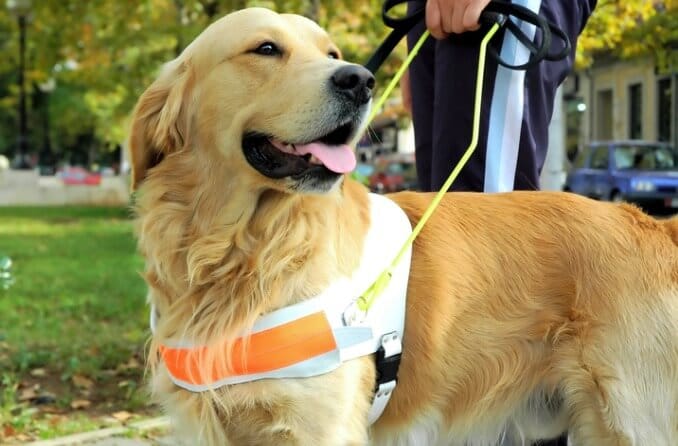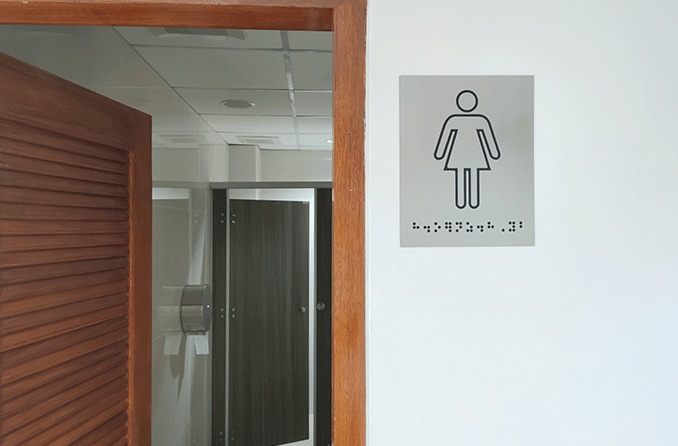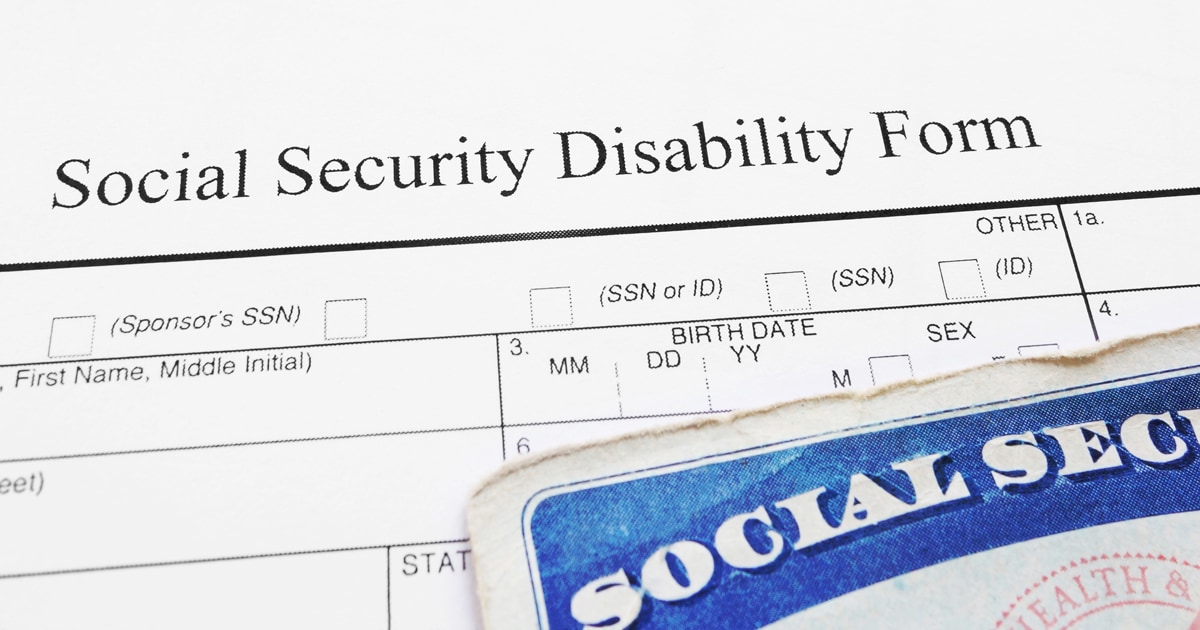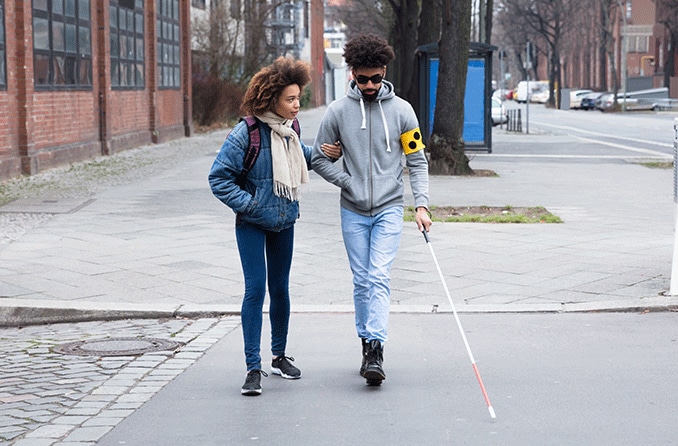How is legal blindness defined?
In the United States, legal blindness is based on measurements of central visual acuity (what’s directly in front of you)and field of vision (what’s above, below and to the sides). Someone is legally blind if their better eye — while wearing any glasses or contacts — has a visual acuity of 20/200 or less or a field of vision of less than 20 degrees.
Visual acuity is the medical term for the sharpness of your eyesight. It’s one of several factors that determine the vision prescription you get from an eye doctor.
When someone is legally blind due to visual acuity, it means that the sharpness of their vision can’t be improved beyond 20/200, even with the help of their prescription eyeglasses or contact lenses.
Legal blindness is different from total blindness, which describes the complete loss of all visual light perception. Most people who are legally blind can still see light, but the objects in their vision are very blurry.
SEE RELATED: DeafBlind Awareness Week
How many people are legally blind?
About 1 million Americans were legally blind in 2015, according to an estimate from the National Eye Institute.
The report also noted that:
3.2 million Americans had low vision, often defined as 20/40 vision or worse, with correction.
8.2 million had some form of uncorrected vision problems.
As the nation’s population ages, the number of legally blind Americans is expected to double by the year 2050.
SEE RELATED: The growing epidemic of high myopia
Causes of legal blindness
Though some people become legally blind after an accident, several eye-related conditions can also cause legal blindness and other levels of impaired vision.
Four leading causes of legal blindness in the United States are:
Age-related macular degeneration – A small portion of the retina ( macula) deteriorates over time and gradually leads to central vision loss
Cataracts – Cloudy deposits on the eyes’ natural lenses that limit how much light can pass through them
Diabetic retinopathy – Damage to the retina caused by diabetes, particularly in cases where diabetes is poorly managed
Glaucoma – Damage to the retina caused by high fluid pressure inside the eye
Less commonly, legal blindness can be caused by:
Optic neuritis and neuropathy – Damage to the pathway between the eyes and the brain ( optic nerve) or the sheath around it.
Congenital cataracts – The clouding of a newborn’s lenses inside their eyes.
Congenital glaucoma – A rare form of retinal damage diagnosed at birth or within the first few years of life.
Retinopathy of prematurity – Disruption of retinal growth that usually affects babies born prematurely with a low birth weight.
Keratoconus – A gradual thinning of the cornea.
Measuring visual acuity
When your eye doctor asks you to read the smallest row of letters from across the room, you’re looking at a Snellen chart, the standard for measuring eyesight clarity in the United States.
Eye charts often use a base viewing distance of 20 feet to compare your vision to the measurement of “normal” vision for most humans — 20/20 vision.
If you have 20/20 vision, you can read the small row of letters that matches that measurement. If you have 20/200 vision, you can only read the single large letter at the top of the chart (usually an “E”).
This means that someone who is legally blind with 20/200 vision sees objects about one-tenth as sharp as someone with 20/20 vision.
READ MORE: Do Blind People Dream?
Measuring visual field
Some people can read a small row of letters on an eye chart, but can’t see the person standing next to them without turning their head. This describes legal blindness due to poor peripheral vision.
A wide field of vision is critical for activities like driving a car or crossing a busy street. Visual field tests can determine if you have a normal field of view without any blind spots or unusual narrowing of your peripheral vision.
Peripheral vision has two components: lateral (side to side)and vertical (up and down). The maximum lateral field of view is almost 180 degrees — half of a complete circle — and the observer can see distant objects on both sides of their vision.
A normal vertical field is smaller — about 135 degrees, or three-eighths of a complete circle.
You are considered legally blind if testing determines a visual field of 20 degrees or less. You may hear this referred to as tunnel vision.
SEE RELATED: Tactile paving
Resources for those who are legally blind
People who are legally blind are often eligible for special services and assistance.
The U.S. Social Security Administration provides benefits to those who are legally blind. States and federal tax authorities also allow certain tax deductions.
Multiple non-government organizations can help people with legal blindness live a more normal life, even with severe vision impairment.
If you are legally blind or care for someone who is, low-vision specialists are typically more familiar with the latest vision aids that help you make the most of the vision you have.
These aids include:
Telescopes
Professionally trained guide dogs can also provide invaluable help for many people who are legally blind.
These options can all be used to help someone with legal blindness live more independently and enjoy more of the same activities as those with normal vision.
READ MORE: Resources for the legally blind
Adam Debrowski also contributed to this article.


